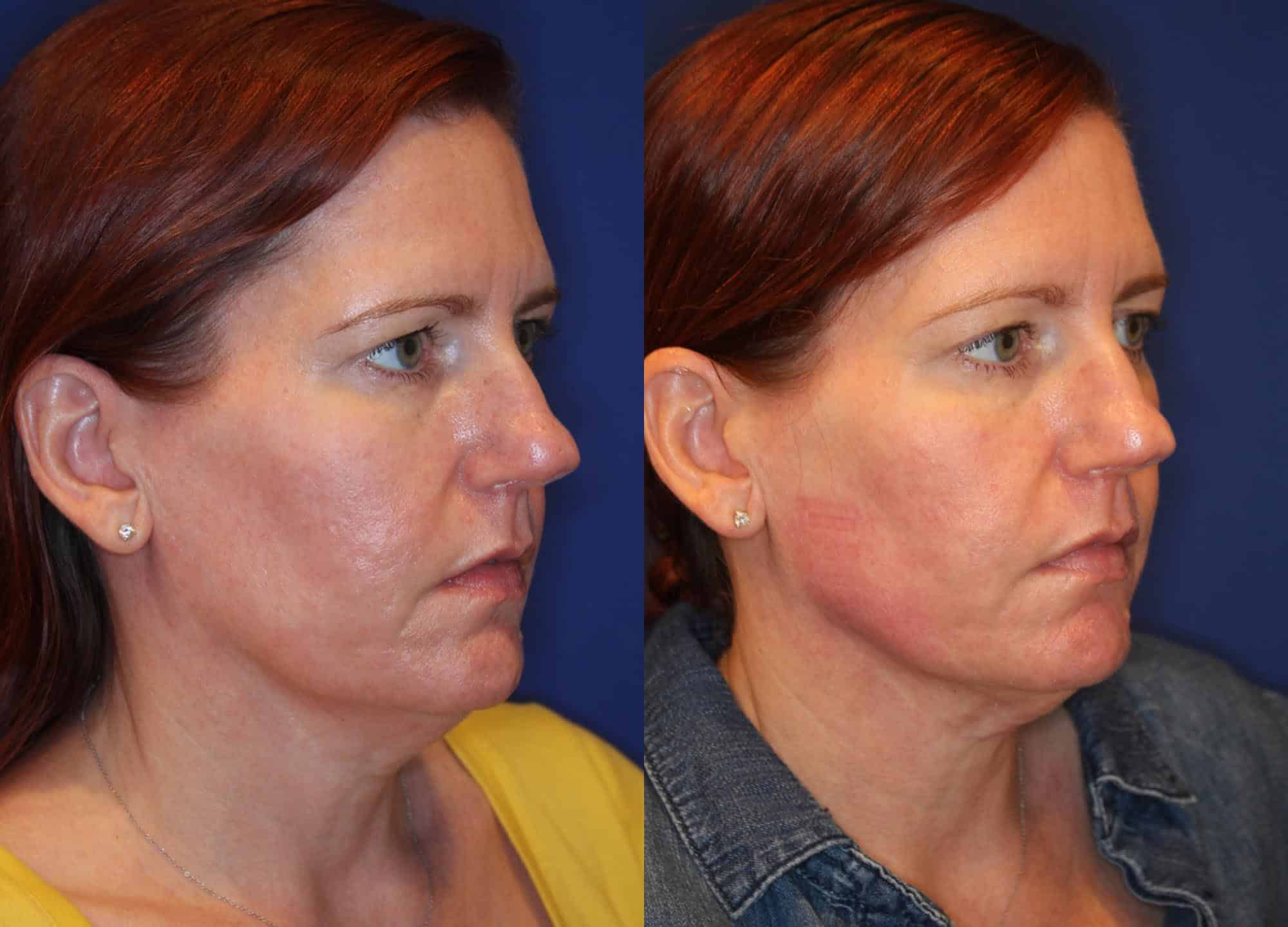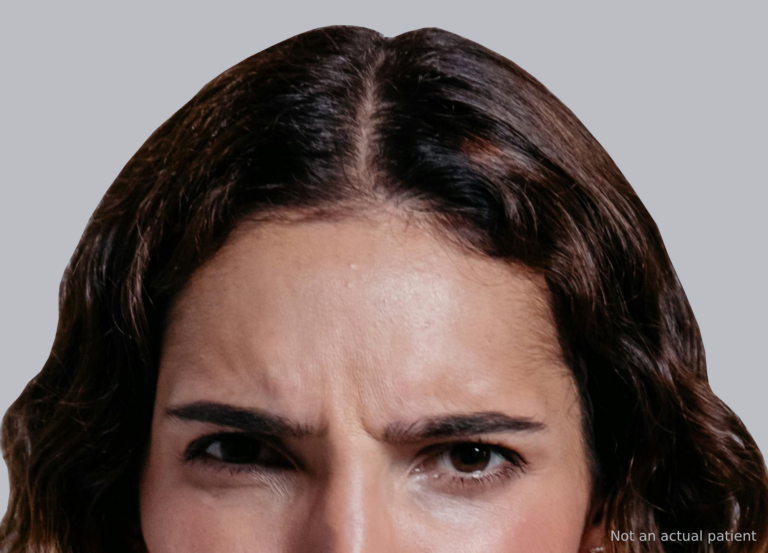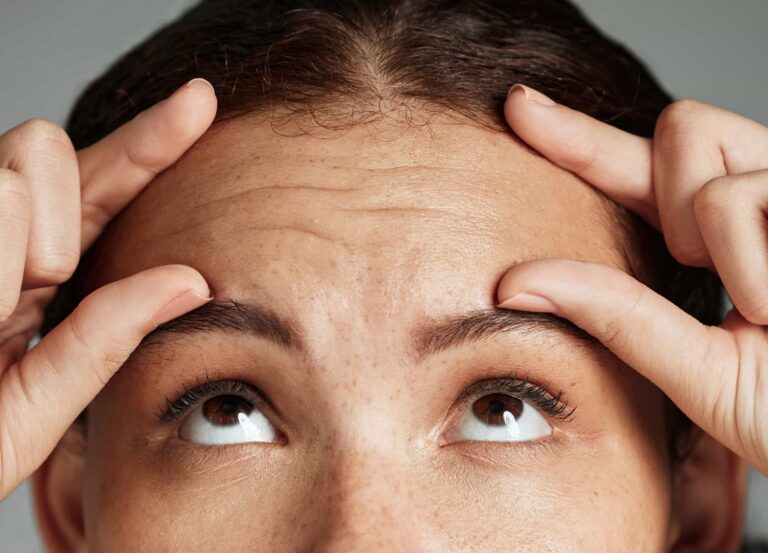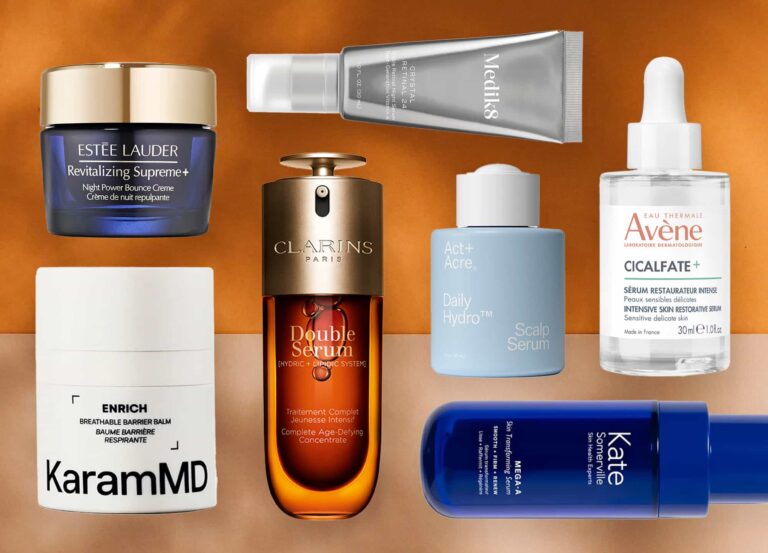The treatment I tried
Evoke
What is Evoke?
Evoke is a noninvasive skin tightening treatment intended for the cheeks, jawline, and neck. It uses radiofrequency energy to heat the dermis and stimulate the production of collagen and elastin. Unlike other, similar treatments, the RF energy is delivered via a hands-free headset, which relies on automatic sensors to constantly measure the energy and temperature, ensuring both safety and efficacy. It’s also marketed as being completely painless.
My Evoke provider
New York City board-certified facial plastic surgeon Dr. Jennifer Levine
Why I tried Evoke
The past six months, I’ve stared at my face more than I have in my entire life, thanks to Zoom. No matter how hard I try to look at who’s speaking, I’m drawn to my own square. And I’m noticing some rounded edges in that square—specifically, where my jawline has lost its definition, the lack of any cheekbone edges, and the lax pocket of skin between my chin and neck. I’ve developed a coping mechanism, during these video conferences, of leaning on one hand and tugging the skin toward my ear, for a temporary, albeit lopsided, tightening effect. During a Zoom consultation, Dr. Levine laughed at my temporary facelift and mentioned that Evoke was the perfect treatment for those looking for mild to moderate lower-face tightening but who aren’t ready for a real facelift yet—like me.
My Evoke concerns
In a word: pain. In the past, I’ve tried Fraxel laser treatments and both Botox and Dysport injections and had to be numbed prior to each treatment. I am not a stoic patient. Dr. Levine assured me that Evoke is painless and would require no numbing, even for someone with my low pain threshold.
Also, this would be my first trip to a doctor’s office during COVID-19. I didn’t love the idea of spending an extended period of time in a small room with another person, but figured I’d have to get comfortable with it. Dr. Levine explained though that the treatment was almost designed for social distancing. Evoke is administered through two hands-free headsets the patient wears, so she wouldn’t be hovering over my face with a device. That means I would spend the majority of the time in a room by myself.
What the Evoke treatment was like
After following all the COVID-19 screening protocols, including a symptom questionnaire and temperature check, I was sent directly to the treatment room. The doctor coated my chin in ultrasound jelly and strapped a headpiece snugly under my chin. It felt like sitting in the chin rest, getting a glaucoma test, at the eye doctor.
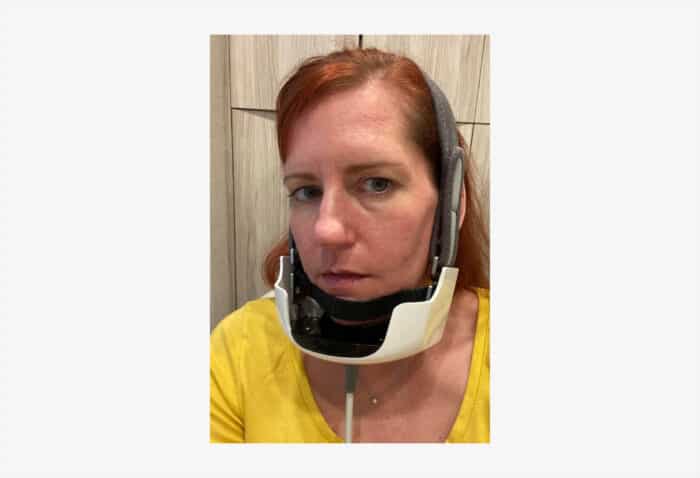
Once she switched the heat on, it felt like a hot stone massage—I was really comfortable, and the heat was even relaxing. Dr. Levine turned the settings to the highest level—43˚ degrees C, or about 109˚ F. She says this heat is safe for all skin tones and won’t cause any pigmentation issues.
Evoke uses bipolar radiofrequency to heat the dermis and subcutaneous tissue, which stimulates collagen and also targets some fat. The manufacturer explains that the energy travels between two electrodes, or poles. The depth of penetration is calculated based on a formula using the distance between the electrodes. This allows for a focused, more precise placement of the energy.
Dr. Levine says what makes Evoke a breakthrough is that the sensors allow the device to sustain the temperature needed to induce the inflammatory response necessary for the body to produce collagen and elastin. That’s why it’s a hands-free treatment for the doctor—the machine does all the work. And the sensors make it safer. They monitor the temperature 1,000 times a second and cut off the energy if it exceeds the setting.
All I had to do was sit there, with the headset on. I kept waiting for an uncomfortable zap or a jolt, but none came. Dr. Levine’s staff checked on me every 10 minutes, but the machine beeps to confirm it’s at the correct settings. I had a panic button, to shut the treatment down if something went wrong. I sat comfortably for 45 minutes, reading news headlines on my phone.
After the time was up for my neck, I switched to the headset that treats cheeks. This looks like elongated headphones where the side pieces fit just below the cheekbones. Again, no pain, just a pleasant warmth. I waited 30 minutes, with the headset on, scrolling through Instagram, and before I knew it, the treatment was over.
The ultrasound goop was wiped off, and I was sent home with instructions to apply neck cream, to help encourage the collagen-formation process.
Related: The Best Treatments for Different Types of Skin Laxity
Evoke results
I had four treatments spaced a week apart—the typical course of treatment Dr. Levine advises (she charges $900 per area, per session). If you have extreme laxity, she suggests six. Evoke caused no bruising and required no downtime. I just had some pinkness from the pressure of the headset, which faded within an hour.
After the first treatment, I saw slightly more definition in my cheekbones and my jawline looked a bit sharper. This is the contouring effect that Dr. Levine says Evoke does especially well. I had lunch with a friend after my last Evoke treatment, and as soon as my mask came off, my friend asked what injectables I had been getting.
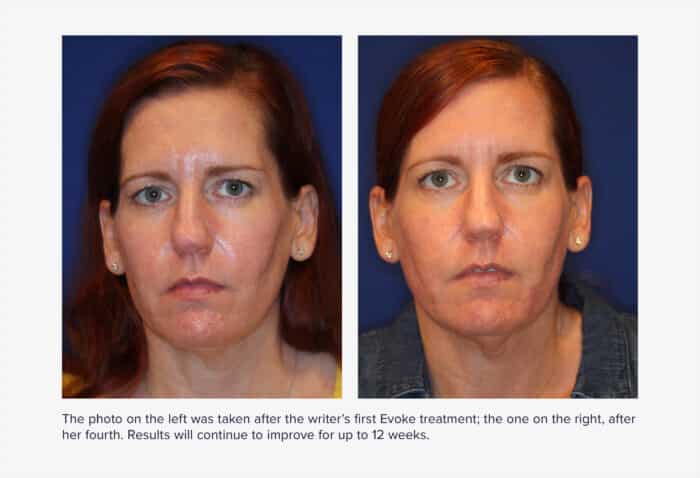
The area of the sagging neck skin—I can’t bring myself to call it a wattle—is narrower, but it’s still there. I feel a tightness in the tissues below the surface, so I’m optimistic that I will see less of that as time goes by. Dr. Levine says I will continue to see improvement for 12 weeks.
I’m happy with the results, especially considering that I didn’t have to endure any pain to achieve them. For a more dramatic effect, à la my improvised Zoom facelift, surgery or Ultherapy may be required. But this is truly a pain-free way to tighten and add definition. On my last Zoom call, I even caught myself turning my head at an angle, to check out my newly visible cheekbones.







